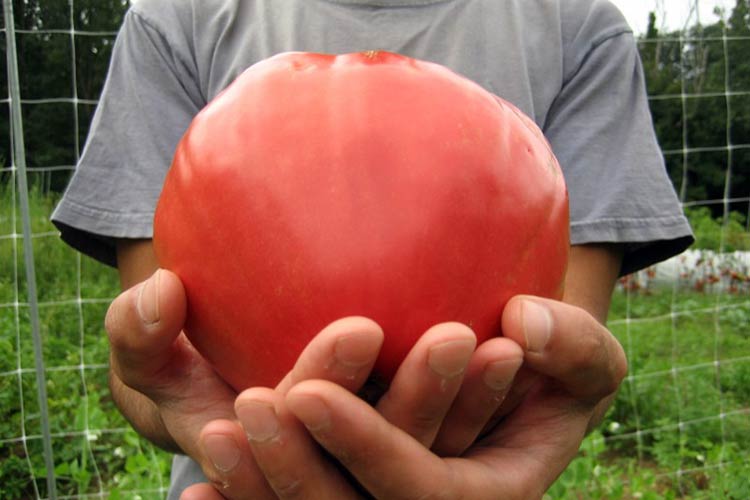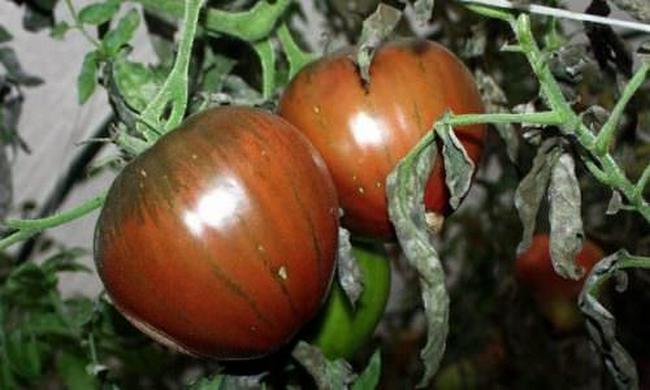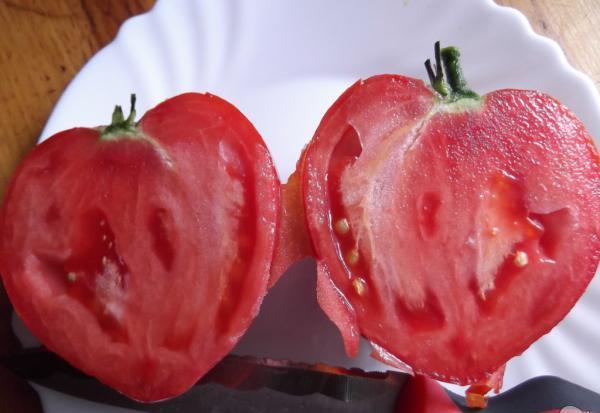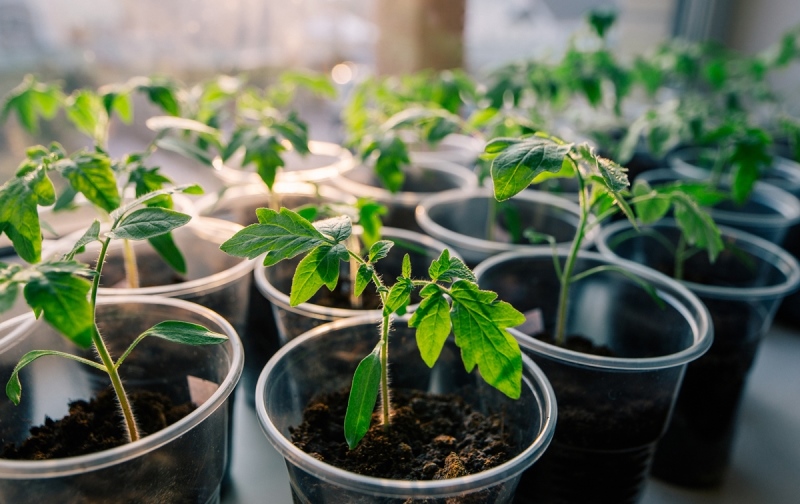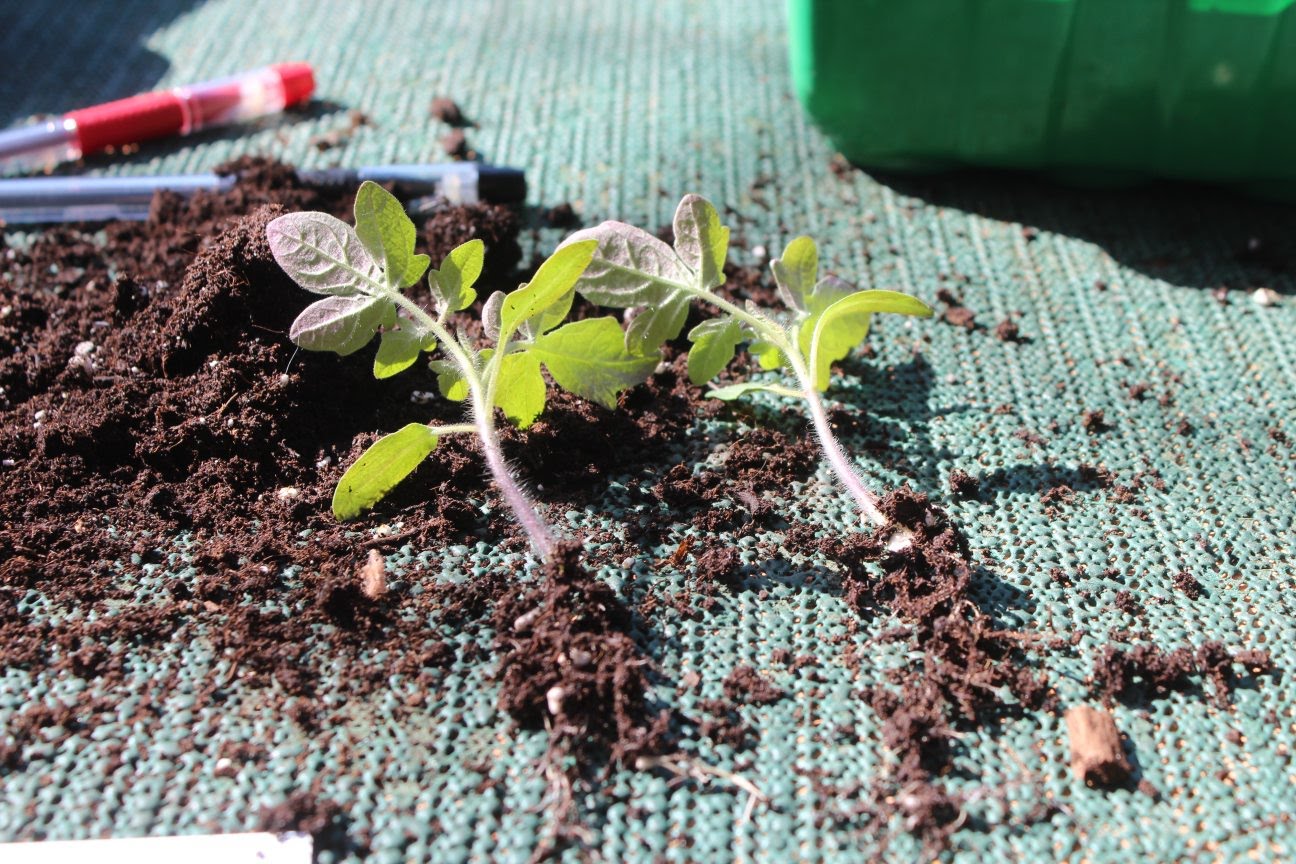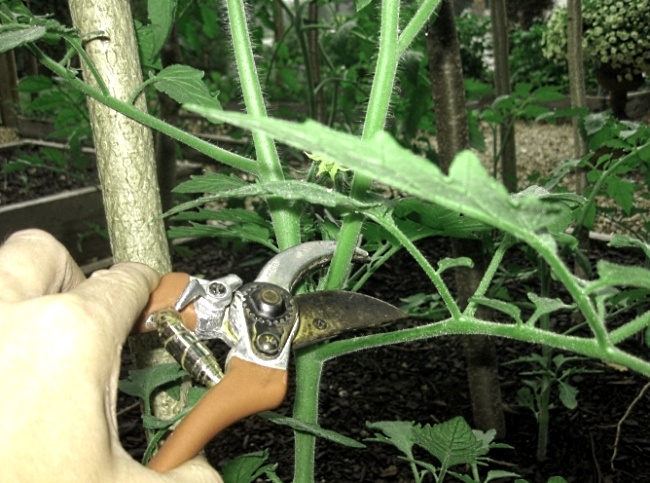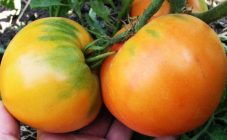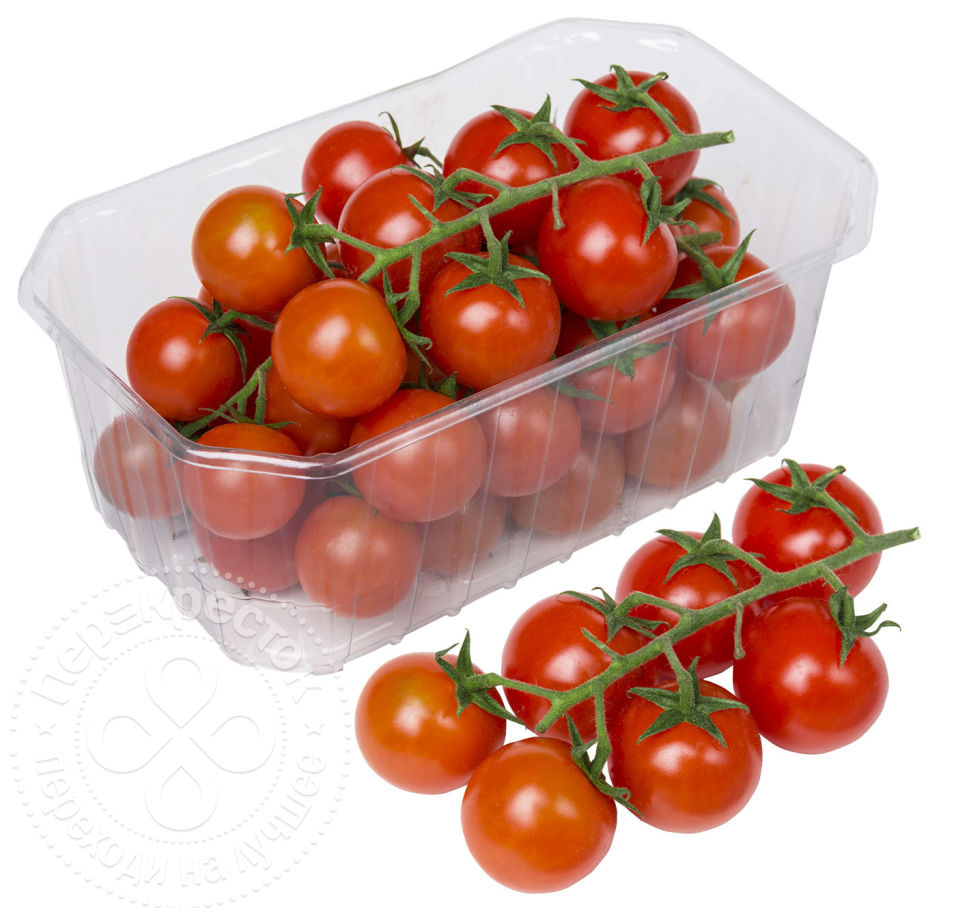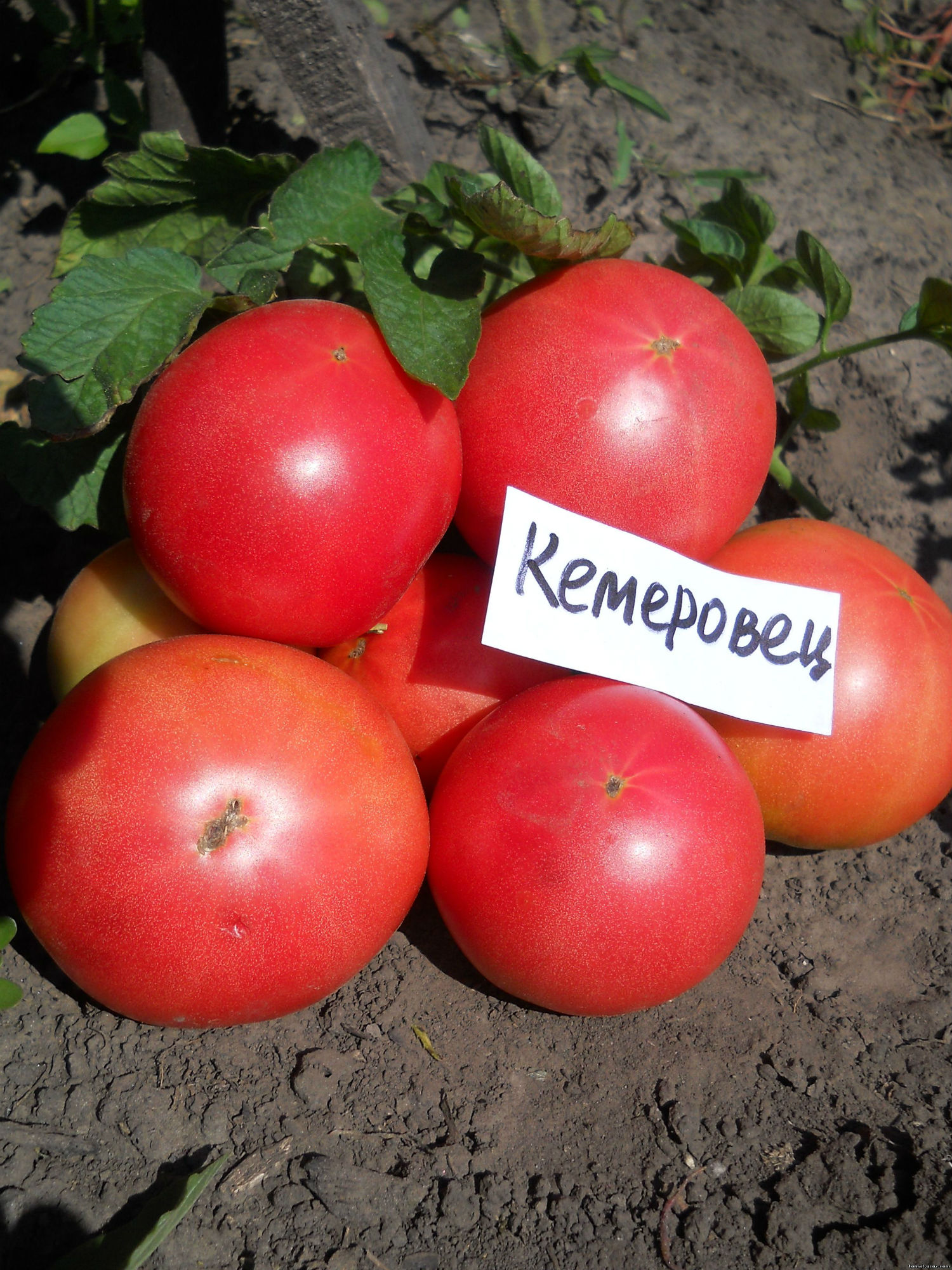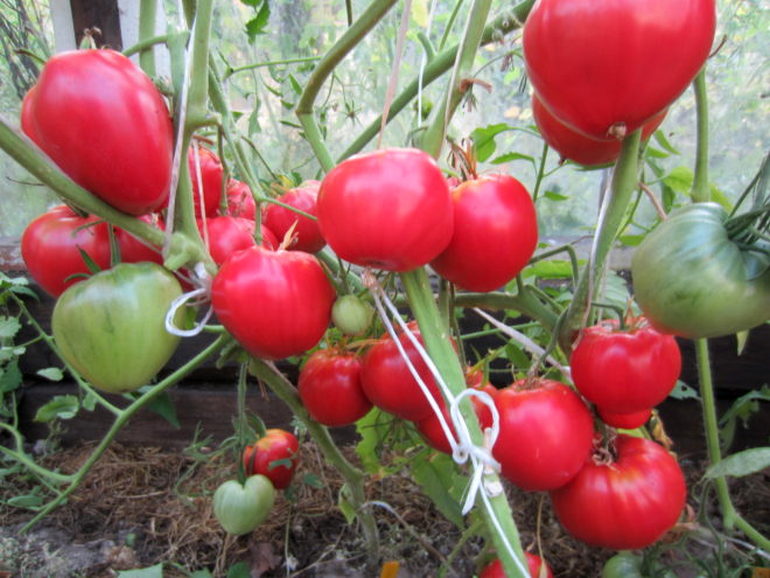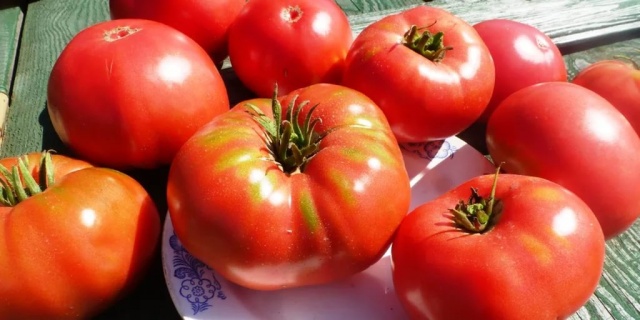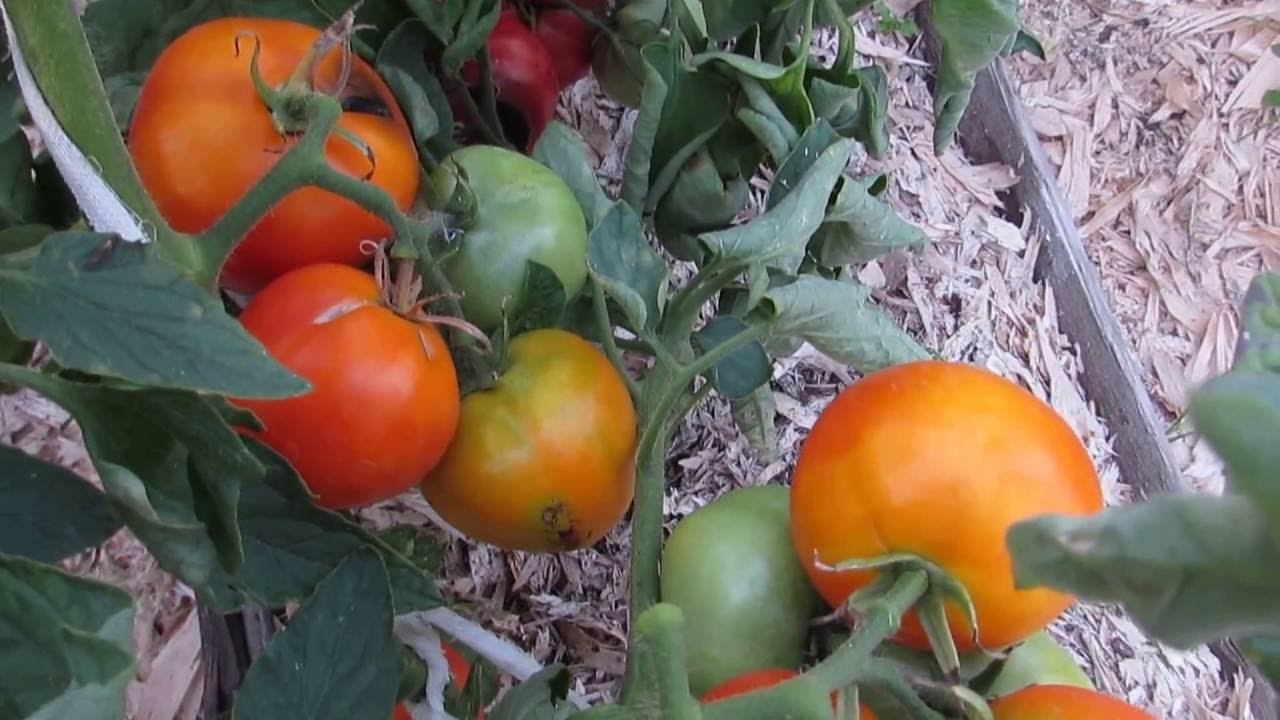Content:
You can see tomato beds in almost every vegetable garden. This popular vegetable is found in various dishes. One of the most curious varieties is the Oxheart tomato. With proper care, just giant tomatoes grow on the bushes. This variety has a high yield, excellent taste characteristics. However, the Oxheart requires decent care. If you follow all the recommendations for planting and growing, then even a beginner gardener can get a decent harvest of tomatoes of impressive size.
General information about culture
The tomato is a member of the Solanaceae family. The culture is annual. The peculiarity of the plant is its rapid growth. It has a taproot, highly branched. It penetrates into the ground to a depth of 1.5 m. The seeds ripen in the berries (fruits) of the plant. Long before the tomato itself is ripe, the seeds have already reached physiological maturity. They are stored for a long time. They can lie in a dry, dark place for 6-7 years, and after landing, they can emerge.
Varieties are divided into:
- Early (from the first shoots to harvest, it takes from 3 to 3.5 months);
- Medium early (you can pick ripe fruits 3.5 months after germination);
- Medium late (the growing season lasts about 3.5-4 months)
- Late (their growing season is more than 4 months);
- Very late (harvesting takes place only 4.5 months after the first shoots).
The fruits are very healthy. They contain a large amount of vitamins and nutrients, including mineral salts, calcium, chlorine, potassium, sulfur, magnesium, phosphorus, zinc, sodium, iron, iodine, vitamins (groups B, P, C), lemon, wine, glycolic , malic acid, etc.
Because of this rich composition, tomatoes have different beneficial properties. For example, they are useful for diseases of the heart, digestive organs, kidneys, and increase immunity.
History of the Bull Heart variety
According to official information, the variety was included in the State Register of Breeding Achievements of the Russian Federation in the early 2000s. The copyright holder is the Agrofirma Poisk society. It was the employees of this organization who applied for the inclusion of the Bull's Heart in the State Register.
However, the history of this tomato does not begin in the 2000s, but much earlier. Gardeners knew about Oxheart tomatoes in the first half of the 20th century. That is why on some packs of seeds you can see the inscription that the tomato appeared, thanks to folk selection. Many experienced gardeners classify the Oxheart as a classic.
Characteristics and features of the variety
The Bovine Heart tomato has characteristics and descriptions similar to other mid-late varieties. However, it has its own characteristics. This is not a hybrid. Its seeds are suitable for planting in the following seasons. Now breeders have bred a fairly large number of Oxheart hybrids. All of them have large fruits, but differ in the color of tomatoes. Hybrid tomatoes (F1) can be colored yellow, orange, pink, white, lilac-raspberry. The most unusual hybrid of the variety is black.
Frost resistance
The variety is not frost-resistant.Recommended for outdoor cultivation in the southern regions. In the central regions of our country (for example, in the Moscow region) and the northern tomato Heart is best grown in greenhouses. A greenhouse will do. Seeds are not planted in open ground. Seedlings are preliminarily prepared, since spring frosts even around 0 ... + 4 degrees can negatively affect the plant.
Yield
This is a medium late variety. From the first shoots to harvest, it takes about 3.5 months or a little more. If you plant seeds for seedlings in March, as is usually done with mid-late tomatoes, then at the end of July the ripe fruits can be removed.
Subject to decent care and a warm summer, the yield is quite high - 6-10 kg are collected from the bush. If the care is mediocre, then you can get 2-4 kg per square meter. There is usually one plant per square meter.
Bloom
The first peduncles can be seen a month after planting in a permanent place. So, if the planting took place in the 20th of May, then flowering will begin in the 20th of June. Flowering lasts about 7-10 days. Further, fruit ovaries appear.
Tomato Bovine heart is pollinated by insects. The best pollinators are bees. If the tomato does not grow in the open field, then it is necessary to provide insects with access to the culture. The greenhouse must be ventilated. It is best to keep the doors open during the day. Tomato flowers do not smell attractive to bees. Experienced gardeners recommend putting jars of sweet jam at the entrance to the greenhouse. This will attract pollinators.
Bull heart blooms with medium-sized flowers. The color of the petals is bright gold or deep yellow.
Plant parameters
Tomato Bovine heart belongs to the determinant species. Tall bush. Powerful. Not a standard one. Erect. It can be extended up to 1.4-1.9 m. A garter to the support is required. Usually there are 4-6 brushes on the stem. Each of the brushes can grow 3-5 tomatoes.
The stem is covered with fine hairs. An adult plant has hard stems. Leaves are medium. There are not too many of them. The color is emerald. The shape is elongated. There are jags. There are fine hairs, clear streaks.
Description of fruits
The fruit of the Bull Heart variety is large in size. The largest tomatoes are observed on the stem in the first cluster. Their weight is from 350 to 800 grams. For some gardeners, tomatoes grew by 1.1 kg. The average weight of this variety of tomatoes is about 150-300 grams.
On one bush, berries of different shapes with a smooth or ribbed surface can form. This is usually an irregular circle. Such a definition of the shape as heart-shaped is applied. The top of the fruit is more massive than the bottom. The lower one tapers towards the end. The tip is sharp.
During ripening, the berries change color. At milk maturity, they are green. Then they acquire a golden color. In technical ripeness, the fruits are red. Ripe tomatoes can be pinkish or burgundy.
The skin is thin but firm. Separates easily. The pulp is fleshy, low-seeded. The number of chambers in one fruit is 3-5. The aroma is pronounced, classic. The color of the pulp is red. The taste is sweet with a spicy sour note. Not watery.
Tomato Bovine heart belongs to salad. It is not suitable for canning because of its large size. Tomatoes are also used for cooking side dishes, added to soup, to meat dishes. Delicious tomato sauce is prepared from the variety.
Decent keeping quality. For example, tomatoes can stay in the refrigerator for about 20 days and not lose their marketability. When transported over long distances, some of the fruits (about 4-7%) may be damaged.
Growing
Tomato Bovine Heart has its own characteristics in agricultural technology. Due to its rather whimsical disposition, the culture is rarely grown on an industrial scale. But these tomatoes can often be seen in vegetable gardens.
Landing
The plant is cultivated in seedlings. Seedlings are sown in March.It takes about 1.5-2 months to grow and get stronger.
The seeds need to be prepared for planting. First, they are placed in a growth stimulator for 2 hours. Then they bathe for 30 minutes in a jar with manganese solution for disinfection. They are germinated in wet gauze for several days.
The soil mixture is poured into a large container or wooden box. It must contain peat, sand, humus. You can buy ready-made seedling soil in a specialized store.
It is recommended to plant the seeds in moist soil to a depth of 1-1.5 cm. The distance between the seeds is 3 cm. Then the container is covered with glass or cling film. This is necessary to create a greenhouse effect, and the seeds sprout faster. After 5-10 days, you will be able to see the first shoots. The glass or film is removed. The box is placed on the windowsill. Tomatoes need warmth (about +24 degrees) and sunlight. The land is watered as needed. Do not allow it to dry out or waterlogged.
When 2 strong leaves appear on the plants, the seedlings can be dived. Each tomato is transplanted into a separate cup. You can use halves from plastic bottles.
Transplanting into the ground is allowed after 50-70 days from the date of sowing. During this period, the bushes should stretch up to 20-30 cm. Before the culture is planted in the garden, it must be hardened. To do this, a few weeks before planting, the plants are taken out into the street. On the first day for 3 minutes, on the second - 6, on the third - 15 and so on. This procedure is needed for the tomatoes to acclimatize and get used to the garden faster.
A crop bed is prepared in advance. They dig it up. For each square meter, 3-5 kg of compost is applied, humus can be used. Ash must be added. It acts as a fertilizer and agent against diseases and pests.
The bullheart variety is tall, it needs a large territory. The distance between neighboring bushes is 0.7-1 m. Each bush is buried in the hole to the place where the first leaf begins to grow. The approximate depth of the planting hole is 10-17 cm. The holes must be well shed. The cultivar grows very quickly and needs more nutrition than the miniature varieties. You can add a spoonful of compound fertilizer during planting. A nitrophoska will do.
Care
Culture care consists of the following activities:
- Garter;
- Bush formation;
- Watering;
- Mulching;
- Greenhouse airing;
- Top dressing;
- Weeding, loosening;
- Prevention and treatment of diseases, pests.
Garter
Tomato Bovine Heart cannot grow normally without support. The plant has a powerful, tall stem. But even he can bend and fall under the weight of the fruit. A support in the form of a wooden stake, the stick is placed next to the plant immediately after planting. A stem is tied to it. Branches with fruits can be fixed on the support.
Bush formation
The bush must be shaped. Otherwise, it will grow and give frail fruits. Usually 1 stem is left, maximum 2-3. The number of branches is also better regulated. One stem should have no more than 6-9 branches with ovaries. Pinching is necessary, that is, pruning unnecessary shoots that grow on the leaf axils. It is necessary to engage in the formation of a bush every 10-14 days.
Watering and mulching
This variety needs timely watering. It is recommended to carry out the procedure every 4 days. One bush consumes 3-5 liters of warm, settled water. During the flowering period and the formation of ovaries, 5-6 liters of water are poured under each bush. The root system of tomatoes is located deeply, so you need to shed the ground efficiently. Tomatoes may crack due to lack of moisture. The land near the bush must be mulched. Straw, grass, hay, peat are suitable as mulch.The protective layer will not only retain moisture in the soil longer, but will also help maintain the temperature at the same level. Such work is necessary, even if the tomato is greenhouse.
Greenhouse ventilation
This is done so that there is no stagnation of air in a closed protected ground structure. This can cause increased humidity, which leads to the spread of fungal diseases. In good weather, it is best to keep the greenhouse open during the day. This way the air circulates better. In addition, insects can fly into an open structure, acting as pollinators.
Top dressing
A bull heart requires a lot of nutrition. Therefore, every 14-20 days it needs to be fertilized a little. Before flowering, it is allowed to water the bushes with infusions of chicken droppings, mullein. During and after flowering, complex additives are used. You can buy ready-made in specialized stores. The main thing is that they have enough trace elements, potassium, phosphorus, nitrogen. However, you should be careful with the latter. A large amount of a substance such as nitrogen can lead to an overly vigorous crop growth.
Loosening and removal of weeds
These procedures can be combined with watering, mulching, or fertilizing. Are carried out as needed.
Prevention and treatment of diseases, pests
To grow a healthy plant that will yield a decent harvest, the crop must be protected from disease. To do this, you need to organize prevention. The Bovine Heart variety has immunity from many diseases. However, it can be overcome by late blight. Its signs are dark vague spots on green fruits. These stains act like acid, eating away at the surface of the fruit. It is difficult to fight the disease when it already spoils the formed tomatoes. Therefore, it is necessary to carry out prevention. As a preventive measure, 2-3 weeks after planting the seedlings in a permanent place, they are watered with a fungicide. You can use HOM, Ridomil, etc. After another 14 days, the action is repeated.
You need to constantly look after the bushes. If the gardener sees brown spots on the leaves, the leaves must be torn off and burned.
A feature of the Bull's Heart is that the leaves repel some of the pests. Therefore, the culture is practically not eaten by insects.
Pros and cons of the variety
Benefits
- High taste characteristics. The pulp is juicy, but not watery, aromatic. Sweetish taste with pleasant sourness. Some call the Oxheart tomato the king of salads. Fruits of the varieties Staroselsky, Zagadka, Sugar giant have similar taste properties;
- Productivity. With proper care, 10 kg of selected fruits are collected from the bush. A similar crop is produced by the varieties Gina, Red giant;
- Summer residents love the variety for its large fruits. Huge tomatoes are easy to pick. After picking 5-10 fruits, you can easily fill a small bucket. A salad of one or two tomatoes with a small head of onion will be an excellent side dish for meat for a family of 3. Relatives of the Bull's Heart in size are the varieties Budenovka, Wild Rose, Babushkin's Secret, Heavyweight of Siberia, etc.;
- Leaves ward off common pests. Because of this feature, the variety is practically not eaten by harmful insects;
- This is not a hybrid. The seeds of the Bull's Heart, as well as the seeds of the Sanka and Volovye Heart varieties, are stored for a long time (about 7 years) and have excellent germination. The seeds from the crop can be planted for the next season;
- Like Siberian Shangi, Bovine Heart can lie in the refrigerator for several weeks without losing its marketability.
Disadvantages:
- The variety, like other large tomatoes (for example, Rosemary, Ace), tends to crack;
- Quite picky about care. It needs to be constantly watered, mulched, otherwise the fruits will crack. The greenhouse or greenhouse needs to be ventilated, the bush must be carefully shaped and fed. Such care is required by the varieties Budenovka, Siberian giant, Gilded belyash;
- The height of the tomato bush Bull heart is about 1.3-1.9 m. Therefore, it must be tied to a support. In this case, not only the stem is fixed, but also the branches with fruits;
- The bovine heart is immune from many diseases, but it is susceptible to late blight.
Tomato Bull's Heart is not in vain a favorite of many generations of gardeners. Its large, very tasty fruits will delight even the most demanding summer resident. Of course, to get a decent harvest, you need to devote time to the tomato. It is better not to plant the variety for people who do not often visit the country.
